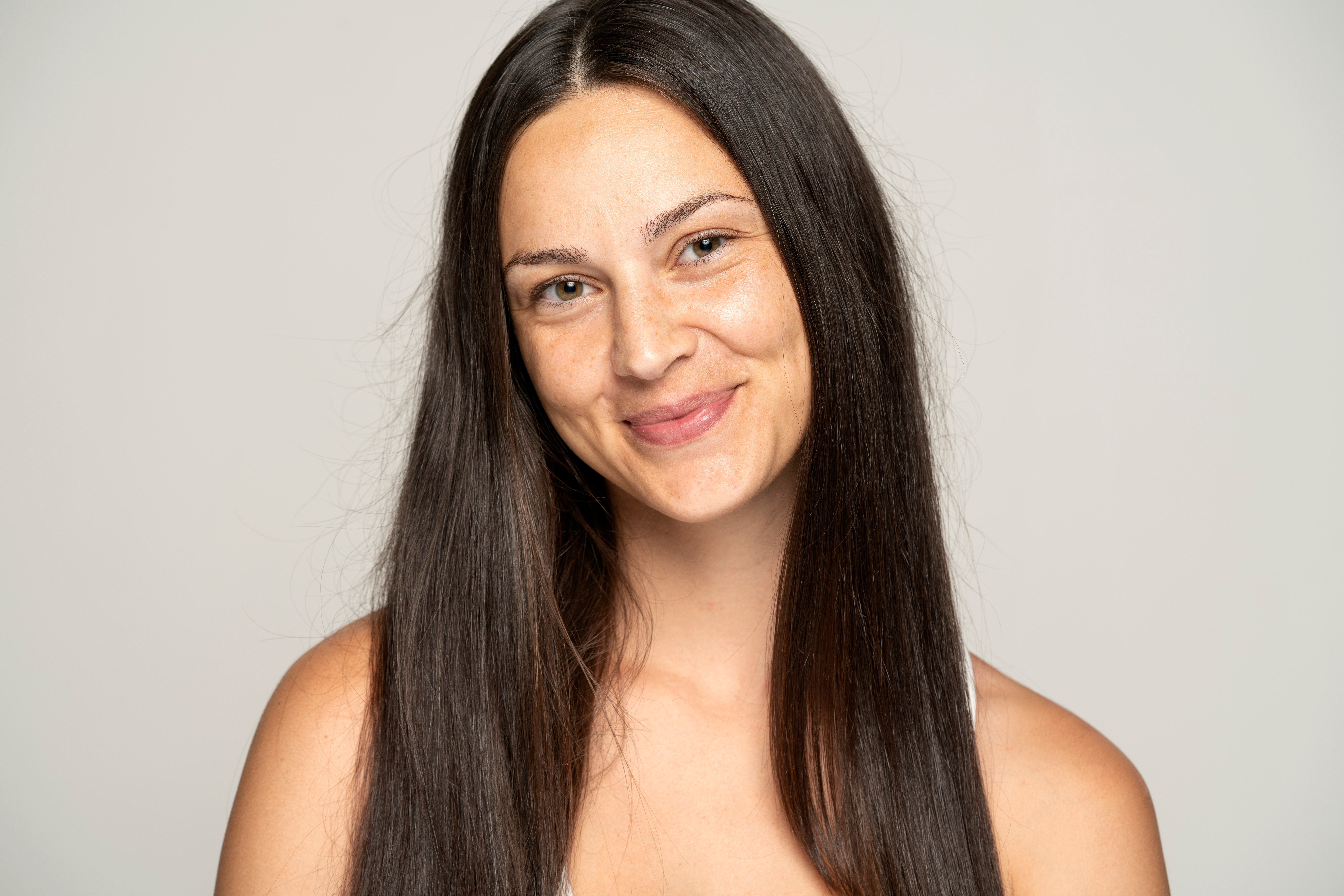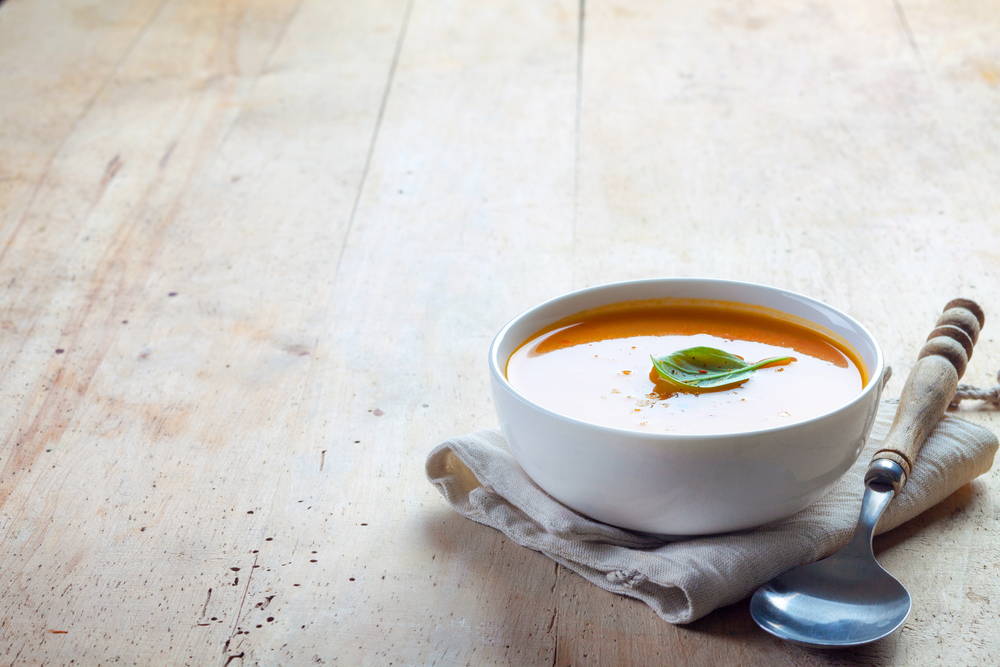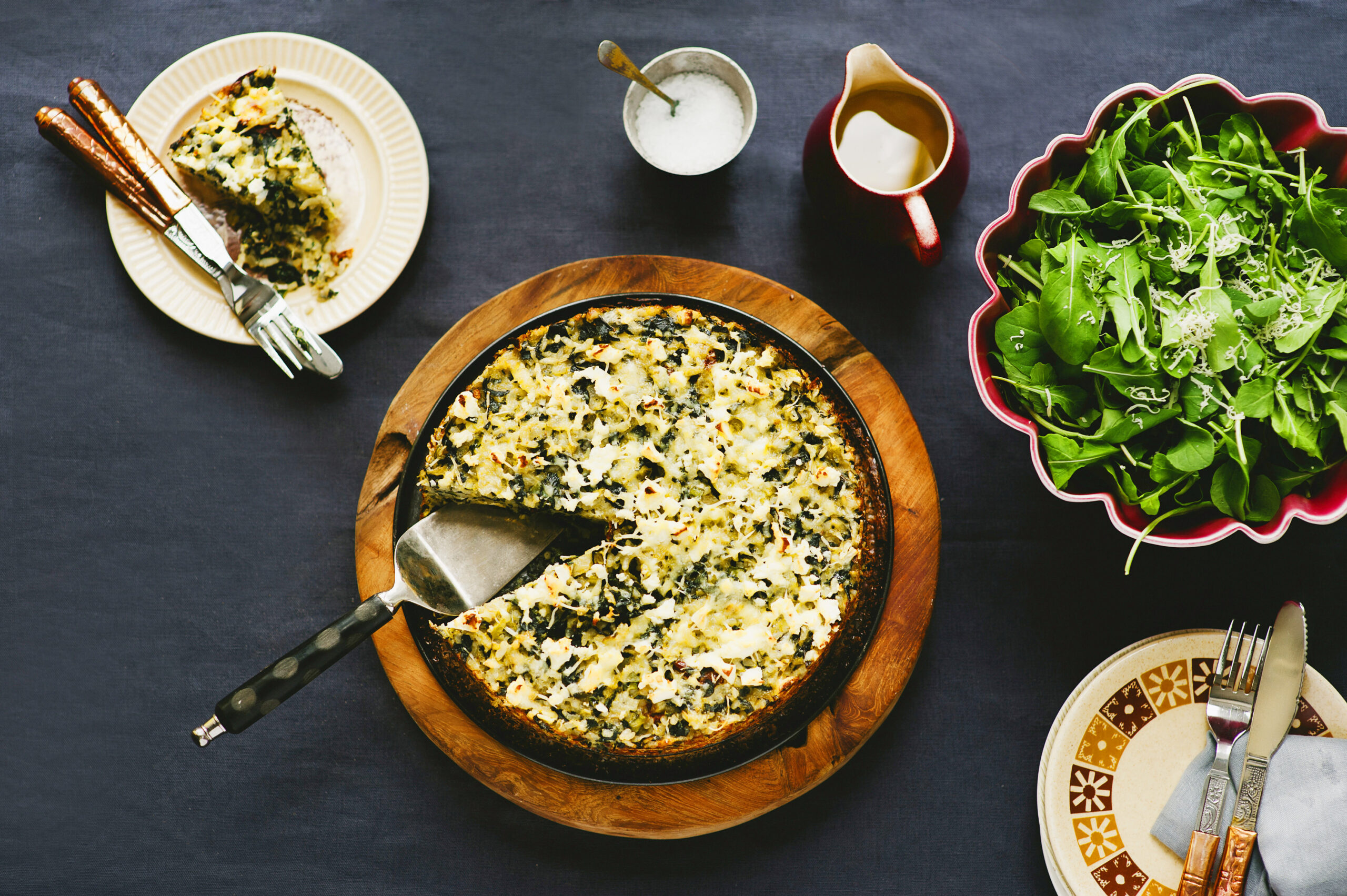Contemporary beauty trends emphasise sustainability, minimalism and self-acceptance – values that can make all of us feel more beautiful.
During the 2020 lockdown, I stopped shaving my armpits and legs. There just didn’t seem to be any point: I wasn’t leaving the house, there was no one to see them, my partner didn’t mind. It started as pure laziness, then became something more.
I began to realise how much time and money I had spent removing my body hair since the age of 14 – either myself, with a razor in the shower, or by paying some poor person to daub me in wax and rip off what felt like my skin. I mentioned not shaving to a friend and she surprised me by admitting she wasn’t shaving either.
“Didn’t you know that’s what all the cool kids are doing these days?!” she said. Suddenly, everywhere I went there were young women with hair on their legs. I just hadn’t been noticing it before – which made me realise how little a bit of body hair even matters.
The unspoken pressure on women to be hairless has shifted over the years – and it still differs between generations. Most of the women I know over 50 would never dream of letting their armpit hair grow wild – and I felt free to let mine grow partly because I’m a millennial and it’s been modelled for me as an acceptable option.
Although women who refuse to remove their body hair still face considerable backlash from men and other women alike – when Swedish model Arvida Byström flaunted her natural leg hair in an ad for Adidas, she received death threats – there is more of a choice for millennials and Gen Zers than there was for our mothers.
It’s not just body hair. Beauty ideals have shifted enormously over time, from the defined waists and rouge idolised in the early twentieth century to the manicured hairstyles of the 1950s to the Kate Moss waifishness of the 1990s.
But what are beauty ideals in Aotearoa in 2021? I’d suggest we’re in a uniquely empowering place today, where the definition of beauty is ever-expanding and au naturel often reigns supreme; where sustainable beauty is a growing focus – yay! – and inner wellbeing is increasingly more important than what you look like on the outside. Let’s take a look at how we got here – and what we can all do to feel more beautiful every day, inside and out.
Modern beauty
These days, the definition of “beautiful” stretches further than it ever did before – just like those famous Dove ads suggested throughout the 2000s. Freckles are beautiful; curves are beautiful; grey hair is beautiful; a widow’s peak or a birthmark or a stretch mark is beautiful.
It’s an unspoken truth that the youth create new beauty ideals – and right now, Gen Z is pushing a far more inclusive beauty agenda than we’ve seen previously. Below, we examine some of the major trends right now and how they’re empowering women more than ever.
Think green
Gen Z is more climate-conscious than any other generation that preceded it – and that climate-consciousness extends to beauty. Sustainable beauty products are on the rise: just think of the cult following carbon-positive skincare brand Emma Lewisham has (and see page 34 for our interview with her), or the massive fanbases supporting products from Biologi, Linden Leaves or Trilogy.
“I think the interest in natural, ethical and sustainable skincare is growing across the board, although anecdotally we’re seeing a lot of younger people more conscious of it,” says Biologi dermal specialist Lucy Macdougald. She suggests this is because consumers are now so much more conscious of being sustainable. “Information is power and I think the reason that consumers are wanting to support sustainable and responsible brands is because now they know better.”
Sustainable skincare tends to offer transparency about its ingredients (which are often organic, natural and ethically sourced), decarbonise its supply chain and/or use sustainable packaging, such as a refills system or fully recyclable glass or cardboard. As such, it is a much greener choice for consumers than traditional beauty products, which can have murky production histories.
“When you purchase skincare, you put your trust in an often-lengthy supply chain,” explains Macdougald. “But with product labelling often hazy at best (or rife with greenwashing at its worst), to find out where the ingredients come from and how they’re made can be an impossible task for consumers. It shouldn’t be this way.” More and more, consumers are insisting it isn’t, and choosing green beauty alternatives.
Mecca skincare education manager Lucy Shaw adds that there’s been a rise not only in new businesses offering sustainable products, but in existing brands switching to sustainable practices – making it truly a movement.
“Every positive change that brands are making is transforming the global footprint of beauty,” she says. “We still have a long way to go, but this current movement is super exciting.”

Less is more
Another key beauty trend in 2021 is… doing less. As Shaw explains, people are practising “skinimalism”, or using fewer skincare products, “not only to reduce waste, but also to simplify their routines, save time and of course save cash”. Recently, she has seen more customers looking for multi-purpose products (e.g., a leave-on mask that doubles as a night moisturiser) and cross-category products (e.g., a balm that can be used for face, body and hair). And with new advances in make-up technology, people can now simplify their make-up as well as skincare regimes, skipping primer thanks to “long-wear” foundations, or dabbing blush on lips, cheeks and eyes.
Macdougald adds that skinimalism reflects a new era of self-acceptance. “Gone are the Kardashian-esque contouring regimes and in its place is fresh and natural-looking skin without all the layers. These trends are about focusing on your skin so you’re comfortable showing off any perceived flaws – hello freckles – and not hiding behind layers of make-up.”
It’s a positive development for skin health, she continues. “The simple truth is that your skin doesn’t actually need that much to thrive. In fact, too many products or an overcomplicated routine can have the opposite results of what you’re trying to achieve. Buying fewer products means we can allow our skin to rely on its own natural processes.”
Body positivity
Part of the reason skinimalism has taken off is because of the growth of the body positive movement and a change in the way women’s physical “flaws” are perceived. Just think of the way ad campaigns have shifted over the past 10 years to include models of all shapes, races, abilities and genders, or the mass social movements against issues like fatphobia – or female body hair.
Chelsea Bonner, chief executive of boutique modelling and talent agency Bella Management and author of Body Image Warrior: An Insider’s Fight for Change in the Modelling Industry, says “beauty” should be a more inclusive term and practising self-love, regardless of your looks, should be the norm.
“The idea that beauty takes one form is nonsensical in my view. I personally find so many different people attractive for so many different reasons,” she says. “The beauty ‘ideal’ that was pushed on us for so long was all about selling products and not at all a reflection of society at large. It is marketing 101 to make people feel like they are imperfect and instil the fear that they will not fit in to society or even within smaller peer groups unless they follow suit.”
She started Bella Management to champion people rocking their own special beauty – and says it’s not all about size. “The conversation is about accepting all bodies, all ethnicities, all ages, all abilities and all genders. It’s about representing the beauty and individuality of humanity.”
In her own life, body positivity means going about life without ever thinking about what her body looks like to others. “I never think about my body any more in a negative way if at all,” she says. “I honestly don’t care what anyone else thinks and the freedom that brings has been the most empowering journey.”
Inner beauty
In combination with accepting your body as it is, the worth of “inner beauty” and “feeling like yourself” has taken off. Gen Z is known for using make-up as a form of self-expression – just think of icons like Billie Eilish and Zendaya, who frequently change their “look” and don’t necessarily strive after traditional beauty ideals.
According to Y Pulse, an American Gen Z and Millennial research and insights group with a global focus, 62 per cent of Gen Z say brands over-edit their photos and 70 per cent say they like it when content from brands is not perfect. In other words, they value “realness” – people looking like themselves.
Gen Z is leading the charge in this area, but nurturing your inner beauty, embracing and enhancing your specific quirks and creativity and putting your mood first goes beyond the young crowd. More than ever, how you feel matters more than how you look.
Looking your best
Let’s be honest though, most women still want to look their best – even if they generally accept their flaws and have given up trying to meet unattainable beauty ideals. There’s something empowering about knowing you look great: it provides that crucial confidence boost heading into a job interview, meeting someone new or just going to work.
Below we suggest some of the simplest ways to feel your most beautiful – informed by 2021’s new beauty developments plus timeless beauty advice.
Cleansing and moisturising well
To look and feel your best, beauty experts recommend building your beauty regime around a few basic steps. “I believe everyone’s skincare routine needs a great cleanser, an exfoliant for once a week use, a hard-working serum and a sunscreen. That’s it!” says Macdougald. “You don’t need a whole cabinet full of hope-in-jar products, just a few that really work.”
A cleanser, whether oil- or water-based, helps remove make-up and eliminate impurities, while an exfoliant tackles dead skin cells. Serums come in all shapes and sizes but help keep skin dewy, moisturised and radiant, reducing fine lines, evening pigmentation and brightening tone. Finally, sunscreen protects your skin from UV rays, which can age your skin quickly.
Ideally, Macdougald says, you should choose products that contain a high percentage of natural, active ingredients for maximum impact, while avoiding any products laden with silicones or sulphites.
Good haircare
Too often, the beauty conversation forgets haircare. But Buoy Hairdressing creative director and Dyson ambassador Michael Beel says haircare doesn’t have to be complicated – and is well worth your time.
“Good basic hair routine should be like your skincare,” he advises. “Think about cleansing, moisturising and deep conditioning masks on a regular basis.”
Generally, he recommends washing your hair every two to three days – and applying two lots of shampoo. “The first breaks the surface tension and removes dirt, whereas the second one is where the nutrients help penetrate the cuticle. I always recommend leaving the second shampoo lathered on the head and scalp for one to three minutes to allow it to do its job, rinse, then condition mid-lengths and ends.” Beel recommends asking your hairdresser to suggest a specific shampoo and conditioner that works for your hair. “Yes, it may be a little more expensive than the supermarket, but it’s worth the investment. You wear your hair every day.”
“Dry shampoo can be a godsend, especially on day two or three,” he continues. “Spray at the roots from a distance and give your hair a brush to help brush out the dry shampoo and the oil and dirt it picks up.”
To make sure your hair is healthy and glossy, Beel also recommends a deep conditioning mask once a week. Apply the product 15-20 minutes before a shower on dry hair, then rinse it out – and if you’re not up for a salon product, Beel recommends Googling a home recipe. “There are some great home hair care recipes on the internet using common household ingredients like eggs and avocado.”
Finally, when using heat appliances to curl or straighten, always use a heat protectant to minimise damage and use the lowest heat setting on your tools.

Less is more
In line with contemporary beauty trends, feeling your best doesn’t need to be costly or complex – skinimalism means you can get more bang for your beauty buck.
If you’re interested in paring down your beauty regime, Shaw recommends choosing products that do a couple of basic things at once, so you’re using fewer products every day. “In a simplified skincare routine, the products that are still showing loyalty are things like cleansing balms (goodbye eye/lip make-up remover), oils and serums (for active and visible results) and sunscreens that double as moisturisers and have active skincare benefits,” she says. It’s a great time to be trimming your routine, as scores of brands pick up on the skinimalism trend.
Go green
The rise of sustainable beauty products is not only trendy, it’s exciting – for both your skin and the planet.
Truly “green” products containing natural, sustainably sourced and/or organic ingredients can sometimes be better for your skin because those ingredients are specifically chosen so as not to cause adverse reactions. Brianne West, founder of zero-waste beauty brand Ethique, warns against assuming that anything pegged as “natural” is better for you: “Natural does not necessarily mean ‘safe’ or ‘environmentally friendly’. It’s not as simple as a blanket ‘good’ or ‘bad’ label.” But some “green” products do work to soothe skin – consider the Linden Leaves range, which was specifically developed to suit sensitive and eczema-prone skin.
Additionally, switching to sustainable beauty products means you know your beauty regime isn’t hurting the earth. Green products tread lighter on the planet not only in their ingredients, but also often in their packaging, offering a wealth of recycled, recyclable, refillable and reusable options, like Emma Lewisham’s 100 per cent circular packaging range. Look out, too, for brands that offset their emissions.
The best news is, it’s easy to integrate sustainable beauty alternatives into your regime. “Live by the motto ‘less is more’ in every sense,” advises Macdougald. “Obviously look to brands that have sustainable practices (including their manufacturers and suppliers) and once you decide on a brand that’s right for you, introduce the products slowly, so your skin gets time to adjust. Also, if you’re looking to make a change, it doesn’t need to be an overhaul or feel like it’s overwhelming – doing any little bit that you can helps!”
Embrace the skin you’re in
Above all, feeling beautiful is about loving the skin you’re in. That means celebrating your best attributes. Draw attention to them. Revel in what you’re proud of. If you like your eyes, give them a lick of mascara and wear them proudly – and when somebody compliments you, don’t talk yourself down, say “thank you” and feel good about yourself!
On the other hand, embracing the skin you’re in involves accepting the parts you’re less fond of – with all the love you would show to a dear friend. Every body is beautiful, partly because of its differences.
As Macdougald explains, our imperfections are what make us unique, and developing self-confidence that’s not appearance-based is a worthy goal. “The reality is all skin has lines, lumps, freckles, bumps etc. I think for women, feeling good in our skin will be an ongoing battle so you really do need to do the work on yourself as much as you can. Do whatever it is that’s good for your soul and all the things that help to build your self-confidence!”
Bonner agrees that the way you look is never more important than how you feel. “My only concern is how healthy my body is,” she says. “I wrote [my] book for anyone interested in how I found my own sense of peace and the journey I went on to find it, while fighting the establishments and brain-washing we are subjected to every day. Rejecting the status quo wasn’t easy, but the result is a calmness I can’t fully articulate. Total peace.”
Looking after yourself
Increasingly, caring for your body on the inside is recognised as key to looking and feeling better. Shaw has seen the “holistic beauty” trend growing, with many of her customers incorporating dietary supplements, meditation, sleep hygiene and facial massage into their daily routines to boost skin health.
Factors like exercise, diet, sleep and stress all influence our appearance directly – just think of the bags under your eyes when you’ve slept badly. But they also regulate how we feel. Exercise gives us an endorphin kick and extra energy. The right diet keeps us feeling alert and healthy. Sleep helps regulate our immune system and steadies our mood. And managing mood consciously, through activities like meditation, gives us more control over our mood even on bad days. In short, taking care of your body and mind helps you look and feel your best.
To boost how you feel, Wellness Retreats NZ founder Melissa Carroll recommends nourishing all four pillars of health: physical, emotional, mental and spiritual. To look after yourself physically, she recommends walking, stretching, dancing, eating nourishing foods, staying hydrated, practising yoga and increasing your heart rate through high-intensity movement.
You can boost your emotional health through self-care, such as a bubble bath or facial, positive self-talk, journaling and connecting with loved ones – and to support your mind’s health, try to stay stimulated and challenge yourself, for example, through setting achievable goals, learning a new skill or engaging in hobbies. Lastly, you can support your spiritual health by connecting back to yourself and nature through meditation, earthing, stretching, breathwork and outdoor time.
Carroll stresses that settling on the right balance is a personal journey. “There is no perfect routine – it’s all about trying things out and finding what is best for us individually,” she says. “But all four pillars are key to cultivating a happy and healthy life and shining from the inside out.”
Beauty through the ages
Baby Boomers (born 1946-1964)
- Want beauty products that make them feel confident, rather than just pretty
- Tend to have an established beauty regime
- Less inclined towards impulsive beauty buys
- Main forms of media: television and print media
- Beauty icons: Meryl Streep, Madonna
Gen X (born 1965-1980)
- High disposable income
- Having great skin is important to them
- Biggest consmetic surgery market
- Take a holistic approach to wellness
- Main forms of media: television and print media
- Beauty icons: Cindy Crawford, Kate Moss, Winona Ryder
Millennials (born 1981-1996)
- The “selfie” generation, so make-up is important
- Instagram face – highly contoured, with strong eyebrows and airbrushed skin
- Rise of K-Beauty
- Main forms of media: Instagram, Facebook
- Beauty icons: Kim Kardashian, Cara Delevingne, Gigi Hadid
Gen Z (born 1997-2012)
- Interest in sustainable beauty
- Skinimalism
- Embrace “flaws” like freakles and birthmarks
- Playful make-up as self-expression
- Interested in trying out new products
- Main forms of media: Tik Tok, Snapchat
- Beauty icons: Zendaya, Hunter Schafer, Billie Eilish







